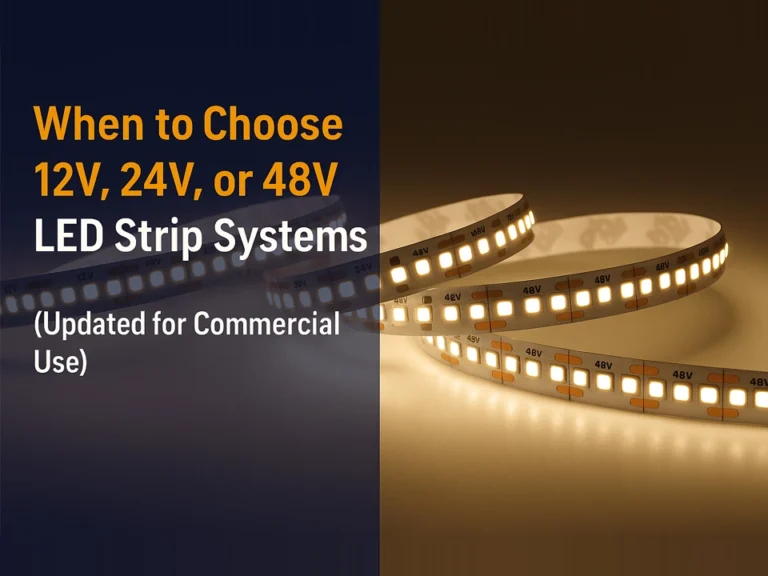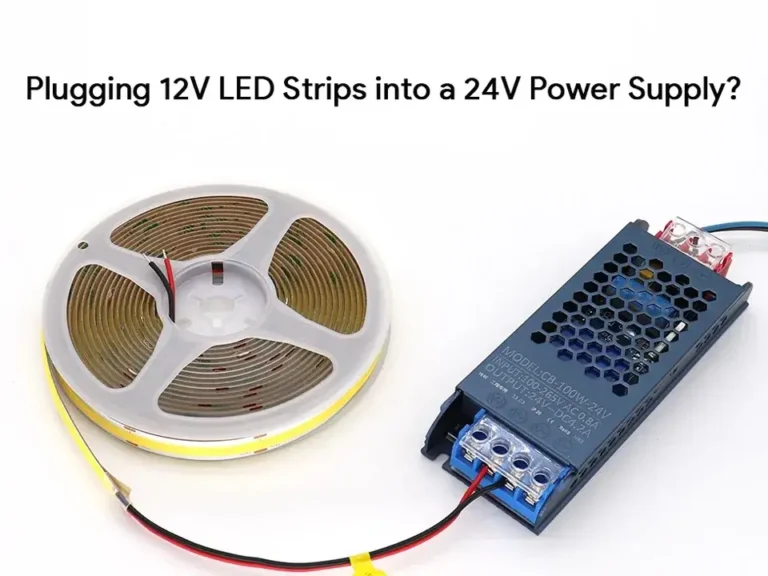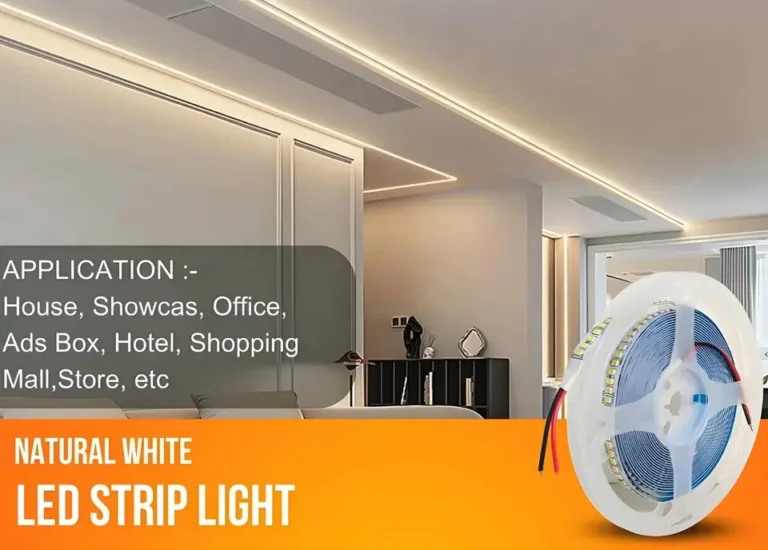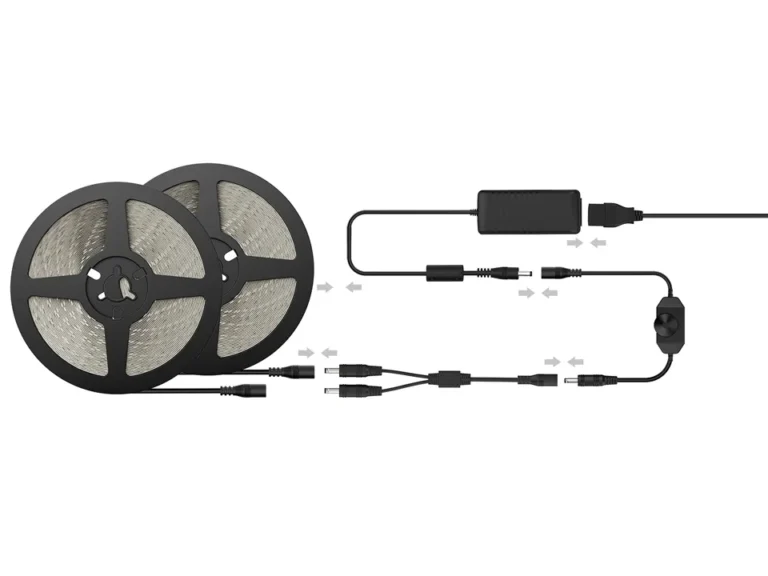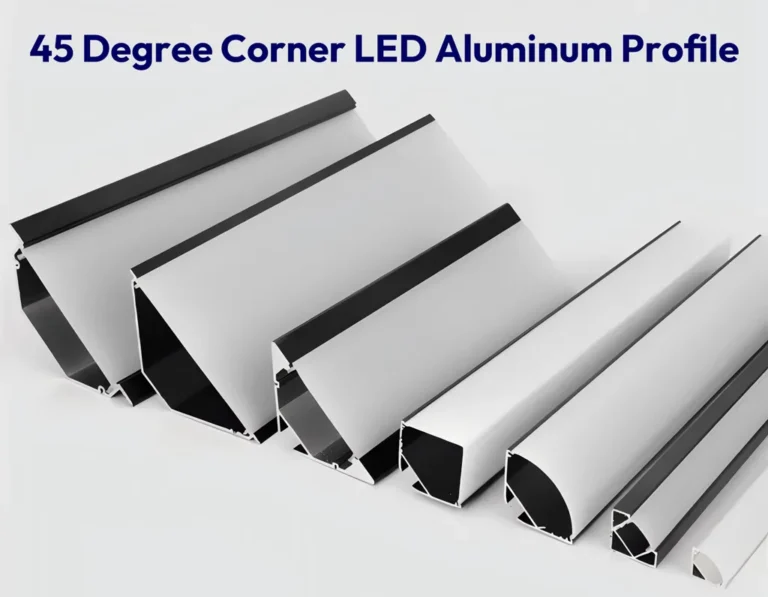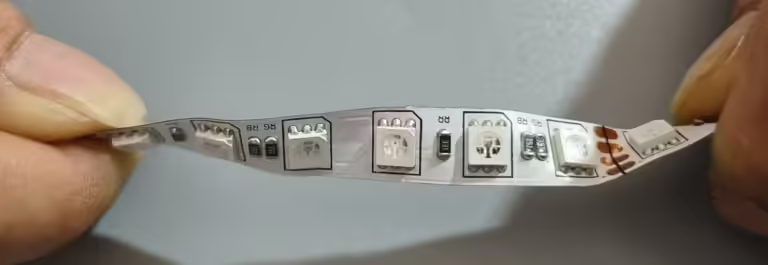In the continuous evolution of modern lighting technology, LED strips have become a popular choice for lighting all kinds of scenes due to their energy-saving, long life, and wide applicability. From home decoration to commercial displays, from automotive interior lighting to outdoor landscaping, LED strips have gradually taken over an important share of the lighting market due to their unique advantages.
As the two most common strip voltages, 12V and 24V LED strip lights each have unique technical characteristics and application advantages that are critical to understanding in order to determine the right voltage option for your specific lighting needs.
Core Differences Between 12V and 24V LED Strips
12V and 24V LED strips are both LED lighting products, but there are significant core performance differences. The most intuitive is their rated operating voltage; 12V LED strips use 12V DC as the working voltage reference, while 24V LED strips need to be driven by a stable 24V DC in order to operate normally.
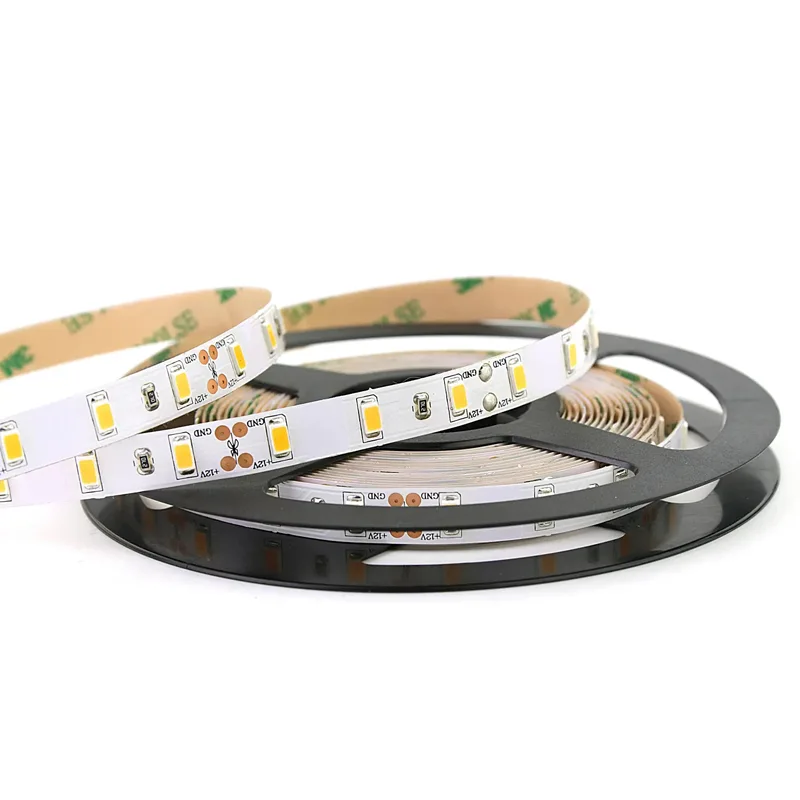
12V LED Strip Light
- LED Type: SMD2216/2835/3014/5050/5630
- LED QTY per Meter Option: 30/60/72/84/96/120
- PCB Width Option: 6mm/8mm/10mm/12mm
- Color Option: 2700K – 6500K/RGB/RGBIC
- CRI Option: 80/90
- Input Voltage: DC12V
- Power per Meter: 6W/8W/9.6W/12W/14.4W
- Efficiency: 100–200 lumen/watt
- IP Grade Option: IP20/IP65/IP67/IP68
- Warranty: 5 years
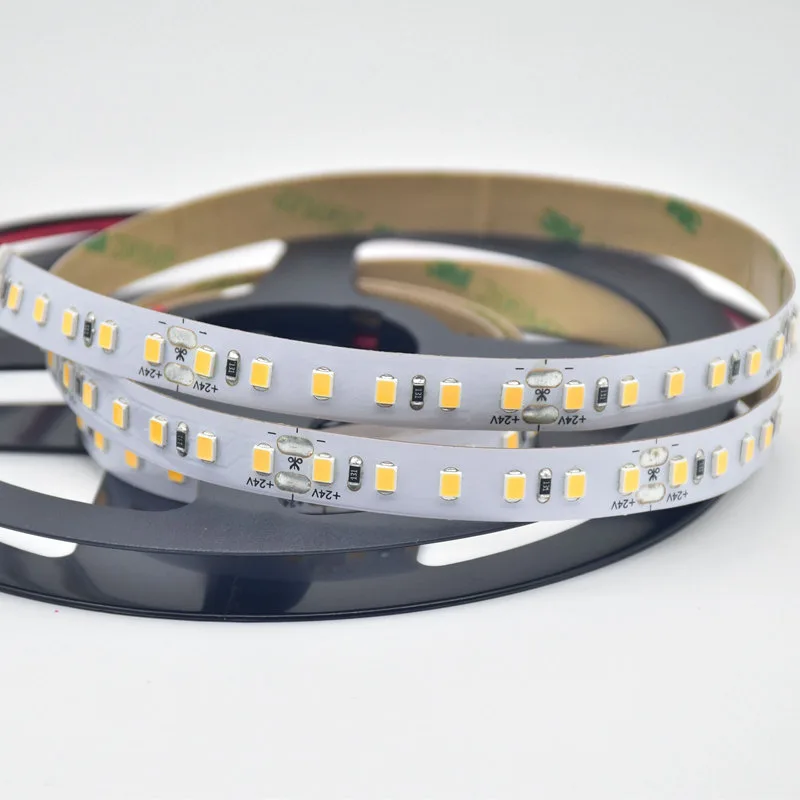
24V LED Strip Light
- LED Type: SMD2216/2835/3014/5050/5630
- LED QTY per Meter Option: 60/72/84/96/120/144/240
- PCB Width Option: 8mm/10mm/12mm/14mm
- Color Option: 2700K – 6500K/RGB/RGBIC
- CRI Option: 80/90
- Input Voltage: DC24V
- Power per Meter: 9.6W/12W/14.4W/19.2W/24W
- Efficiency: 100–200 lumen/watt
- IP Grade Option: IP20/IP65/IP67/IP68
- Warranty: 5 years
This voltage difference directly contributes to the difference in power consumption and the ability to achieve different levels of brightness. The lower the voltage, the higher the current for the same power requirement. So a 12V LED strip will operate at a higher current than a 24V LED strip, which makes them different in terms of their energy performance and ability to adjust brightness.
Advantages of 12V LED Strip Lights
If you are looking to minimize power consumption, 12V LED strips are an ideal choice. 12V strips have unique advantages that can make them a better fit for your project.
- Smaller Cut Lengths: 12V LED strips are typically cut in increments half the length of 24V strips. You can cut the strip closer to the exact length needed! This can make a significant difference when installing LEDs in tight spaces such as cabinets.
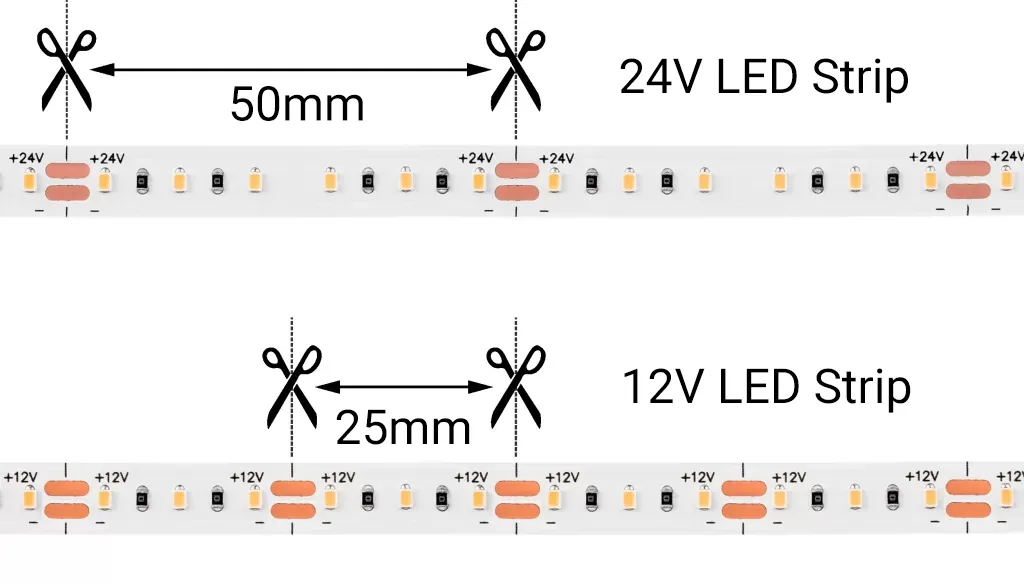
- Perfect for More Scenarios: Cars, trucks, and boats use 12V power 99% of the time. This means that 12V LED strips can be integrated into existing electrical components without having to convert the voltage!
The lower operating voltage of 12V LED strips gives them an irreplaceable advantage in scenarios that require a high degree of adaptability to the supply voltage:
- Automotive field
- Marine industry
- Other kinds of vehicle lighting
- Trade show booths
- Display fixtures
- Directional signage
Advantages of 24V LED Strip Lights
Despite their relatively high power requirements, 24V LED strip lights offer some significant advantages. For example, 24V LED strips are more energy efficient because they operate at a lower current and generate less heat.
This feature makes it the preferred choice for large lighting fixtures, which often require high levels of brightness, while 24V LED strips are able to drive more LED chips per circuit without overloading. This not only reduces inefficient energy loss and improves energy efficiency but also extends the life of the LED strip.
Therefore, 24V LED strips are the ideal solution in most cases. The reasons are as follows:
- Requires Half the Current: Since 24V LED strips have twice the voltage of 12V LED strips, they require only half the current of 12V strips. This makes a big difference in the number of controls required.
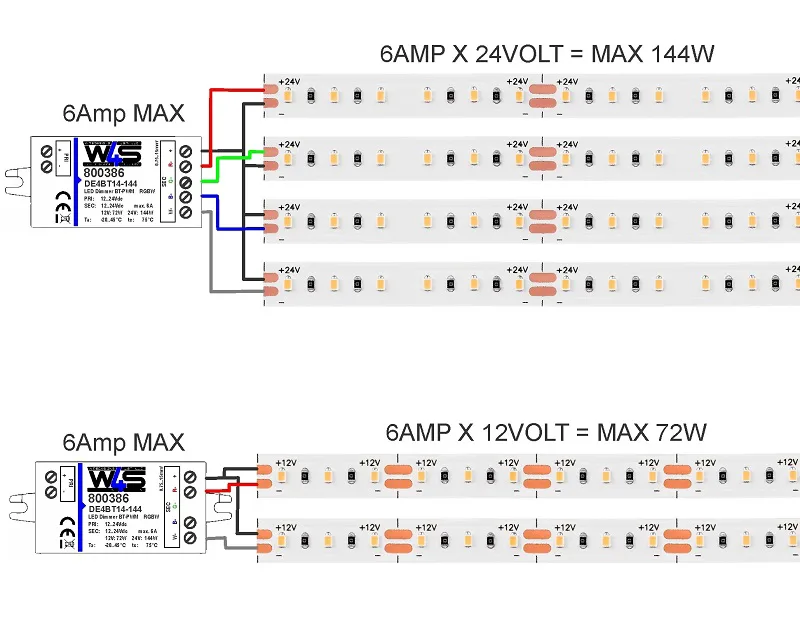
- Improved Energy Efficiency: 12V LED strips can be less energy efficient. This is also due to the higher current required. The current is limited by the thickness of the wires passing through. If the wire is not thick enough, a large part of the current will be converted into heat. This is not only wasteful but, in some cases, may even create a fire hazard!
- Higher Brightness: 24V LED strips have a higher light output. Again, this is due to the lower current required. The voltage itself does not have any effect on the light output, but rather the number of LEDs and their quality. 24V LED strips can hold twice as many LEDs but consume the same current as 12V strips.
- Better for Longer Runs: One of the main differences between 12V and 24V LED strips is that 24V LED strips can be run for longer distances than 12V LED strips due to the voltage drop. The voltage drop is a gradual decrease in circuit voltage due to the resistance of the conductor. Since 24V LED strips require a lower current to achieve equivalent power output, their voltage drop is correspondingly smaller.
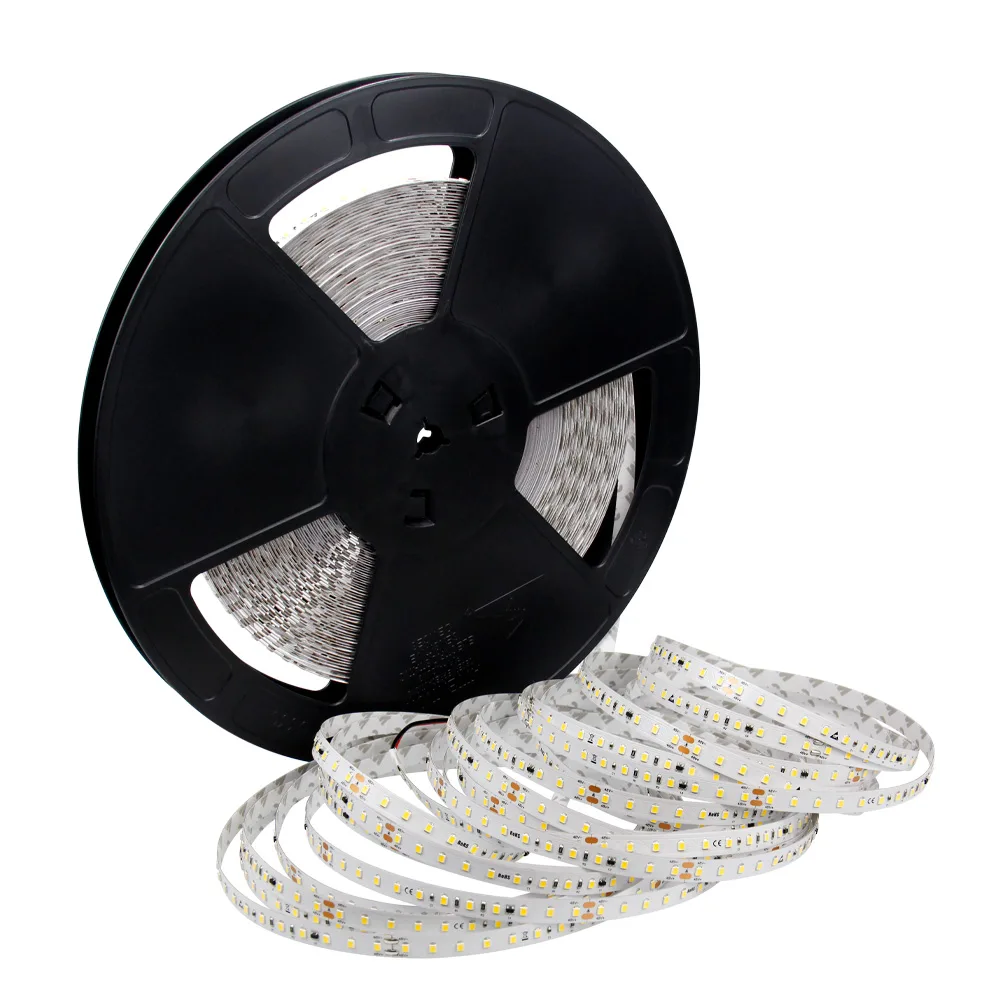
DC24V Constant Current Long Run LED Strip Lights
- LED Type: SMD2835
- LED QTY per Meter: 120
- PCB Width: 10mm
- Length: 10m/15m/20m
- Input Voltage: DC24V
- Power per Meter: 7.2W
- Color Temperature: 2700K – 6500K
- IP Grade: IP20/IP65/IP67/IP68
- Warranty: 3 years
Because 24V LED strips support longer LED wiring, they are especially suitable for larger spaces where multiple LED strips need to be connected together to achieve the desired lighting effect, for example:
- Large indoor spaces
- Long-distance outdoor lighting projects
- Large spaces such as exhibition halls
- Kitchen lighting with high brightness requirements
- Lighting needs in long-term home remodeling projects
How to Choose Between 12 Volt and 24 Volt LED Strips
When deciding which voltage to choose for LED strips, there are a number of key factors to consider that are interrelated and will affect the final choice.

Power Consumption
The first factor is the power supply that will be used to power the LED strip. If a 12V power supply is already available, whether it’s an on-board power supply, an existing low-voltage power system, or a power adapter specifically configured for 12V devices, then choosing a 12V LED strip is more favorable from a cost perspective. This not only avoids the cost of purchasing additional power supply equipment but also reduces energy loss during the power conversion process.
On the other hand, if a new power supply is required, although the upfront investment in a 24V power supply is higher, including the purchase of power adapters and installation and commissioning costs, it is often more advantageous in terms of long-term cost and energy savings. 24V systems have a low current characteristic, which effectively reduces energy consumption over long periods of time and reduces the cost of electricity. At the same time, because it produces less heat, it also reduces the investment and maintenance costs of heat dissipation equipment.
Installation Area Length
Another important consideration is the installation length of the LED strip. For shorter circuits, such as those used in home interiors for localized lighting such as cabinet edges, bedside backsplashes, etc., which are typically less than a few meters in length, 12V LED strips are usually sufficient. Their simple installation and low cost make them cost-effective for small projects.
For longer lines, such as corridor lighting in large shopping malls and outdoor landscape lighting strips, the length may reach tens of meters or even hundreds of meters. In this case, in order to avoid voltage drop and to ensure the stability of the brightness, the use of a 24-volt system is more appropriate. A 24-volt system can maintain voltage stability in long-distance transmission and reduce brightness attenuation to ensure the consistency of the entire lighting line and aesthetics.
Brightness Requirements
Finally, the level of brightness required at the installation site is a critical factor that should not be overlooked. If you need to achieve high brightness lighting effects, such as in industrial plants, parking lots, and other places with high brightness requirements, 24V LED strips may be a more appropriate choice.
For some relatively low brightness requirements, pay more attention to the atmosphere of the place, such as bars, cafes, etc. 12V LED strips through a reasonable layout and design can also create a warm, comfortable lighting environment.
Misconceptions About 12V and 24V LED Strip Lights
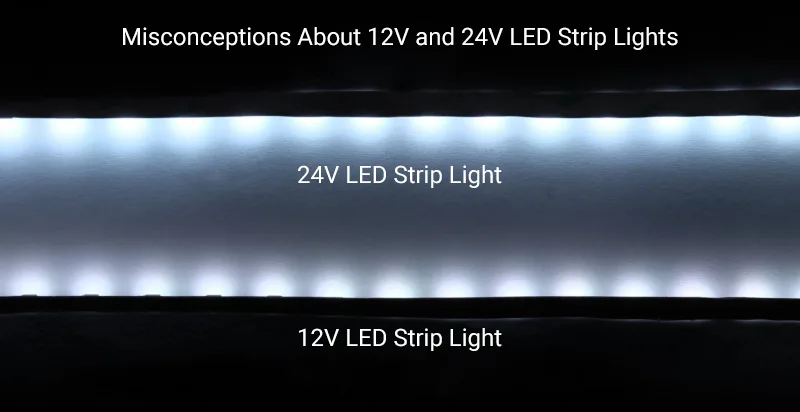
There are some common misconceptions about LED strip voltage:
- The higher the voltage, the brighter the light: This is factually incorrect, but voltage does have an indirect effect on light output. The higher the voltage, the lower the current required. Therefore, more individual LEDs can be installed in the strip, and the more LEDs there are, the brighter the strip will be.
- The higher the voltage, the higher the energy consumption: This is not the case. Higher voltages are balanced by using less amperage. 12V LED strips require more current (amperage), and when the wires are not thick enough to accommodate this higher current, the power is wasted as heat!
- 12V and 24V LED strips have different life spans: If installed correctly, 12V and 24V LED strips will last the same amount of time, unless of course there are external factors. If a strip is installed with wiring that can’t handle the higher currents required by a 12V LED strip, too much heat will be generated, which can damage the LED strip assembly.
Summary
Choosing the right voltage for an LED strip is an important decision that needs to be made carefully. 12V and 24V LED strip lights each have their own unique advantages and disadvantages, and the key is to precisely match them to your specific needs.
Taking into account power consumption, mounting flexibility, and brightness requirements, users can make an informed decision on which LED strip is best for them. Whether you end up with a 12V or 24V LED strip, you’ll enjoy an energy-efficient, durable, and versatile lighting experience.
If you’re still unsure about choosing a voltage for your LED strip light, feel free to contact our LED lighting experts for expert advice. With their extensive industry experience and expertise, they can help you assess your specific needs and ensure that your lighting project achieves the best possible results.
